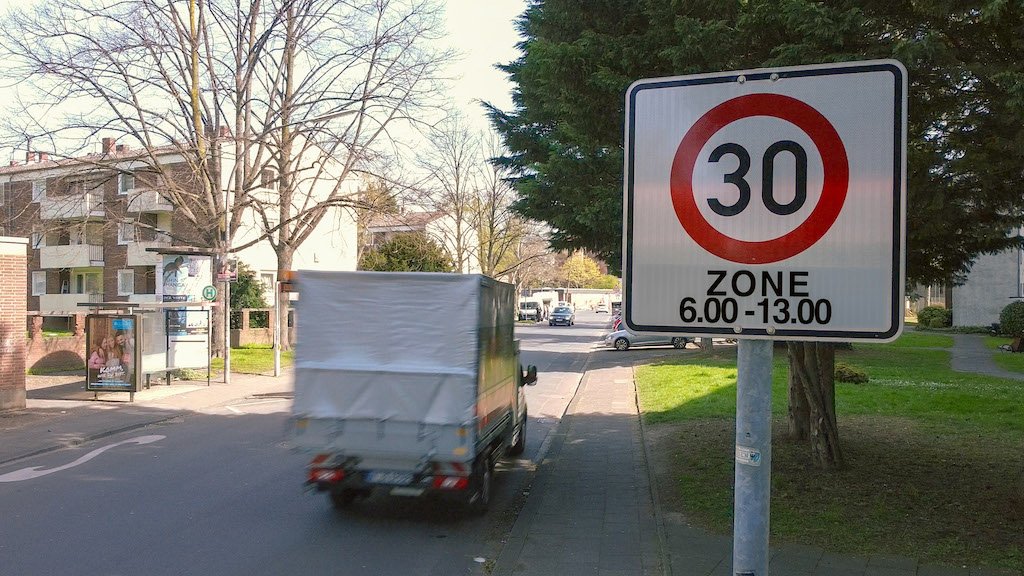Geofenced speed control could improve safety and traffic flow while removing street clutter
Ford is trialling connected vehicle technology using geofencing – a virtual geographical boundary – that could one day do away with the need for speed limit signs completely.
As well as potentially making streets safer for other road users and pedestrians, Ford’s Geofencing Speed Limit Control system could help drivers avoid inadvertently incurring speeding fines and reduces roadside clutter.
“Connected vehicle technology has the proven potential to help make every day driving easier and safer to benefit everyone, not just the person behind the wheel,” said Michael Huynh, manager, City Engagement Germany, Ford of Europe. “Geofencing can ensure speeds are reduced where – and even when – necessary to help improve safety and create a more pleasant environment.”
Across Europe, says Huynh, up to 29 per cent of road fatalities are pedestrians and cyclists, depending on the country. Putting in place 30 km/h zones is one of the key measures to reduce the risk to pedestrians in urban areas, as drivers have more time to react and the impact speed is lower.
Geofencing control, says Ford, is potentially more flexible and effective than on-board driver assistance technologies.
Ford’s researchers recently started a 12-month trial in Germany to assess the impact of speed limiting in terms of improving traffic flow and reducing the risk of accidents. Testing with the all-electric Ford E-Transit vans extends to all 30km/h zones in the centre of Cologne, as well as in selected 50 km/h and 30 km/h zones elsewhere in the city.
In use the driver receives information via the dashboard display, with the new speed limit flashing below the vehicles current speed as the vehicle automatically reduces its speed to that of the geofenced zone. The driver can override the system and deactivate the speed limit control at any time.
In the future, drivers could set their own geofencing zones for instance at depots and private facilities. Speed limits could also be set dynamically, to take account of local hazards, temporary road works and the time of day.
The project builds on other Ford research projects to improve road safety, including connected traffic light tech that automatically goes green to offer clear routes for emergency services, and the use of specific speakers inside the vehicle to alert drivers to the direction from which people and objects are approaching.
The trial is the result of a collaboration between the Ford City Engagement team, city officials in Cologne and Aachen, and Ford software engineers in Palo Alto, in the US.
A further benefit is the potential to reduce the number of road signs. The German Traffic Code has over 1,000 types of road signs. In the UK, it is estimated that the number of road signs has doubled in the last two decades, to around 4.6 million in total, with the Department for Transport requesting that local councils remove unnecessary and unsightly signs. Reducing the number of signs on the roads, says Ford, could go a long way towards decluttering cities, with drivers able to concentrate on the roads rather than keep watch for signs.
“Our drivers should benefit from the latest technical support, including geofencing based assistant systems that enable them to keep to the speed limits and fully concentrate on the road,” said Dr Bert Schröer, Head of Vehicle Technology and Mobility, AWB, a waste disposal company involved in the Cologne trial.
Ford is also using geofencing technology to improve air quality in cities, ensuring that the plug-in hybrid electric E-Transits run only in electric-drive mode whenever the vehicle enters a low‑emission zone.

